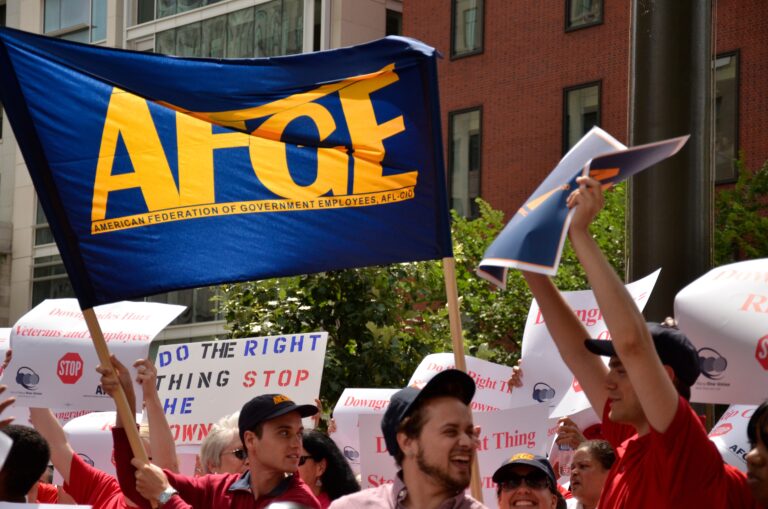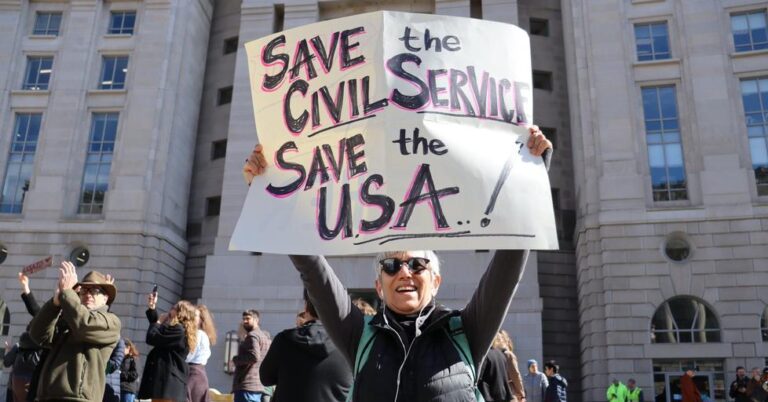Two weeks ago, in his 2014 State of the Union address, President Obama proclaimed a “year of action” in which he would use his executive powers to advance his agenda, in spite of a deadlocked Congress. In particular, the President announced that he intended to issue an executive order raising the minimum wage for federal contractors to $10.10 an hour.
Such an executive order would not be the first use of Obama’s presidential pen to help workers, and should not be the last. This backgrounder discusses the ways in which President Obama used his executive power to benefit workers during his first five years in office and outlines a few ways in which the President might use the executive power to strengthen workers’ rights in the future.
President Obama’s Past Use of Executive Power to Benefit Workers
Prior to this year’s State of the Union address, President Obama used his executive powers to benefit workers in the following ways:
- Executive Order 13495 (signed Jan. 30, 2009, eff. Jan. 18, 2013): Requires certain large federal contractors to offer employment to service workers employed by the previous contractor.
- Recess appointments to the National Labor Relations Board: After Senate Republicans repeatedly blocked President Obama’s attempts to appoint members to the National Labor Relations Board, President Obama recess appointed three members. These appointments are currently being challenged in the Supreme Court in Noel Canning v. NLRB, explained here.
- Executive Order 13502 (signed and eff. Feb. 6, 2009): Repeals two prior executive orders issued by President Bush barring federal agencies from requiring federal construction contractors to sign Project Labor Agreements (PLAs) (pre-hire collective bargaining agreements), and instead encourages agencies to utilize such agreements.
- Presidential Policy Directive 19 (signed Oct. 10, 2012): Bars intelligence agencies from retaliating against whistleblowers.
- Presidential Memorandum regarding the Extension of Benefits to Same-Sex Domestic Partners of Federal Employees (signed June 2, 2010, implementing rule eff. Aug. 20, 2012): Extends employment benefits to same-sex partners of federal employees, and where applicable, their children.
- Executive Order 13494 (signed and eff. Jan. 30, 2009, amended Oct. 30, 2009, implementing rule eff. Dec. 2, 2011): Prohibits federal contractors from using federal funds to influence employees’ decision to join or not to join a union.
- Executive Order 13496 (signed and eff. Jan. 30, 2009, implementing rule eff. June 21, 2010): Revokes executive order issued by President Bush requiring federal contractors to post a notice informing employees of their right not to join a union, replacing it with requirement that federal contractors post a notice informing employees of their rights under the NLRA.
Executive Actions President Obama Could Undertake To Strengthen Workers’ Rights
Other significant changes to workers’ rights that President Obama could implement include:
- Implement High Road Contracting: As I noted in the News and Commentary on December 17th, a recent Congressional report found that between 2007 and 2012, 49 federal contractors were cited 1,776 times for serious wage and/or safety and health violations. These same 49 companies were awarded $81 billion in federal contracts in 2012 alone. The report urges President Obama to issue executive orders requiring contractors to provide federal agencies with up-to-date information about their and their subsidiaries’ labor records; publishing lists of contractors with high numbers of labor violations; and requiring companies with labor violations to take certain steps in order to continue or renew their federal contracts. In addition, the New York Times’s Teresa Tritch suggests an executive order requiring agencies to take into account the quality of the jobs contractors would offer workers. The AFL-CIO proposes the order require contractors to disclose the supply chains of the products they produce and the locations of their and their suppliers’ factories.
- Ban Discrimination on the Basis of Sexual Orientation by Federal Contractors: President Obama refused to sign such an executive order in 2012, hoping that the Employment Non-Discrimination Act (ENDA) would pass. That legislation is now stalled in the House. President Obama should use his executive power to implement this long-overdue rule.
- Stop Deporting Non-Criminals: The Obama administration announced in August 2011 that ICE would focus its enforcement efforts on criminal “aliens.” However, ICE has not actually abided by this policy. In 2013, only 13.9% of removal cases filed in immigration court by ICE involved immigrants accused of criminal violations. By comparison, 16% of removal cases filed in 2004 (President G.W. Bush’s last year in office) and 29.2% of cases filed in 1992 (under the first President Bush) involved immigrants accused of criminal violations.
- Provide Federal Contractors with Paid Parental Leave: The United States is the only industrialized country in the world that does not mandate that employers provide paid maternity leave. Many countries additionally require paid paternity leave. Although President Obama does not have the power to change the FMLA, he probably does have the power to mandate that federal contractors provide employees with paid parental leave. His power to order this, like his power to order a higher minimum wage for federal contractors, derives from the Procurement Act. Under the Act, the President has the power to “prescribe such policies and directives that the President considers necessary to carry out [the Act, as long as they are are] consistent with [the Act].” The courts have read the Act as giving the President “broad-ranging authority.” An executive order will be upheld as long as there is a “sufficiently close nexus” to the values of providing the government an “ ‘economical and efficient system for … procurement and supply.” Requiring contractors to provide parental leave to their employees will ensure that contractors can hire the most talented and skilled workers, regardless of their sex, increasing contractors’ efficiency. Such a link between economy and efficiency is likely sufficient, as the D.C. Circuit has held that the standard is “lenient” and even an “attenuated link” will suffice. President Obama paid lip service to the ideal of paid maternity leave in his State of the Union address. He should put those words into action.
- Increase the Minimum Wage for Employees of Federally Funded Projects: Pushing to the limits of his executive power, President Obama might even be able to issue an executive order regulating the working conditions (setting a higher minimum wage, for example) for employees of entities (such as universities and hospitals) receiving more than a threshold amount of federal funding. The President’s power to do so derives from the Congressional acts appropriating funds to these entities. The Third Circuit recognized as much in Contractors Ass’n of E. Pa. v. Sec’y of Labor. There, the court upheld an executive order requiring all applicants for federal funding for construction projects to utilize affirmative action in hiring employees. The court explained that the President’s power to issue the order derived from the appropriation statutes providing funding for the construction projects: “When the Congress authorizes an appropriation for a program of federal assistance, and authorizes the Executive branch to implement the program by arranging for assistance to specific projects, in the absence of specific statutory regulations it must be deemed to have granted to the President a general authority to act for the protection of federal interests.” By the same logic, Congressional appropriations to entities, such as universities and hospitals, could give the President the power to dictate working conditions for employees of those entities. Such an executive order would probably not be found to conflict with the NLRA because it would likely fall under the market participant exception outlined in Boston Harbor. A 2002 D.C. Circuit case supports this conclusion. In Bldg. & Const. Trades Dep’t, AFL-CIO v. Allbaugh, the D.C. Circuit upheld President Bush’s executive order barring federal agencies from requiring or prohibiting the use of a Project Labor Agreement on any federal or federally-funded construction project. The prohibition applied to “any executive agency issuing grants, providing financial assistance, or entering into cooperative agreements for construction projects.” The court dismissed the plaintiffs’ argument that the order was preempted by the NLRA because it extended to federally-funded projects and was therefore regulatory, writing that such an argument “proceeds from too crabbed an understanding of proprietorship.” According to the court, “the Government unquestionably is the proprietor of its own funds, and when it acts to ensure the most effective use of those funds, it is acting in a proprietary capacity.” In addition, “that the Government is a lender to or a benefactor of, rather than the owner of, a project is not inconsistent with its acting just as would a private entity; a private lender or benefactor also would be concerned that its financial backing be used efficiently.” It concluded: “In sum, the distinction between federally owned and federally funded projects is not relevant here.” Applying the logic of Contractors Ass’n of E. Pa. and Allbaugh, the President should be able to issue an order mandating a higher minimum wage be paid to employees of certain federally funded projects, and such an order should not be found to be in conflict with the NLRA.
These are but some of the ways that President Obama might exercise his executive powers to advance workers’ rights. We will see how far the promised “year of action” extends to worker protections.






Daily News & Commentary
Start your day with our roundup of the latest labor developments. See all
December 8
Private payrolls fall; NYC Council overrides mayoral veto on pay data; workers sue Starbucks.
December 7
Philadelphia transit workers indicate that a strike is imminent; a federal judge temporarily blocks State Department layoffs; and Virginia lawmakers consider legislation to repeal the state’s “right to work” law.
December 5
Netflix set to acquire Warner Bros., Gen Z men are the most pro-union generation in history, and lawmakers introduce the “No Robot Bosses Act.”
December 4
Unionized journalists win arbitration concerning AI, Starbucks challenges two NLRB rulings in the Fifth Circuit, and Philadelphia transit workers resume contract negotiations.
December 3
The Trump administration seeks to appeal a federal judge’s order that protects the CBAs of employees within the federal workforce; the U.S. Department of Labor launches an initiative to investigate violations of the H-1B visa program; and a union files a petition to form a bargaining unit for employees at the Met.
December 2
Fourth Circuit rejects broad reading of NLRA’s managerial exception; OPM cancels reduced tuition program for federal employees; Starbucks will pay $39 million for violating New York City’s Fair Workweek law; Mamdani and Sanders join striking baristas outside a Brooklyn Starbucks.